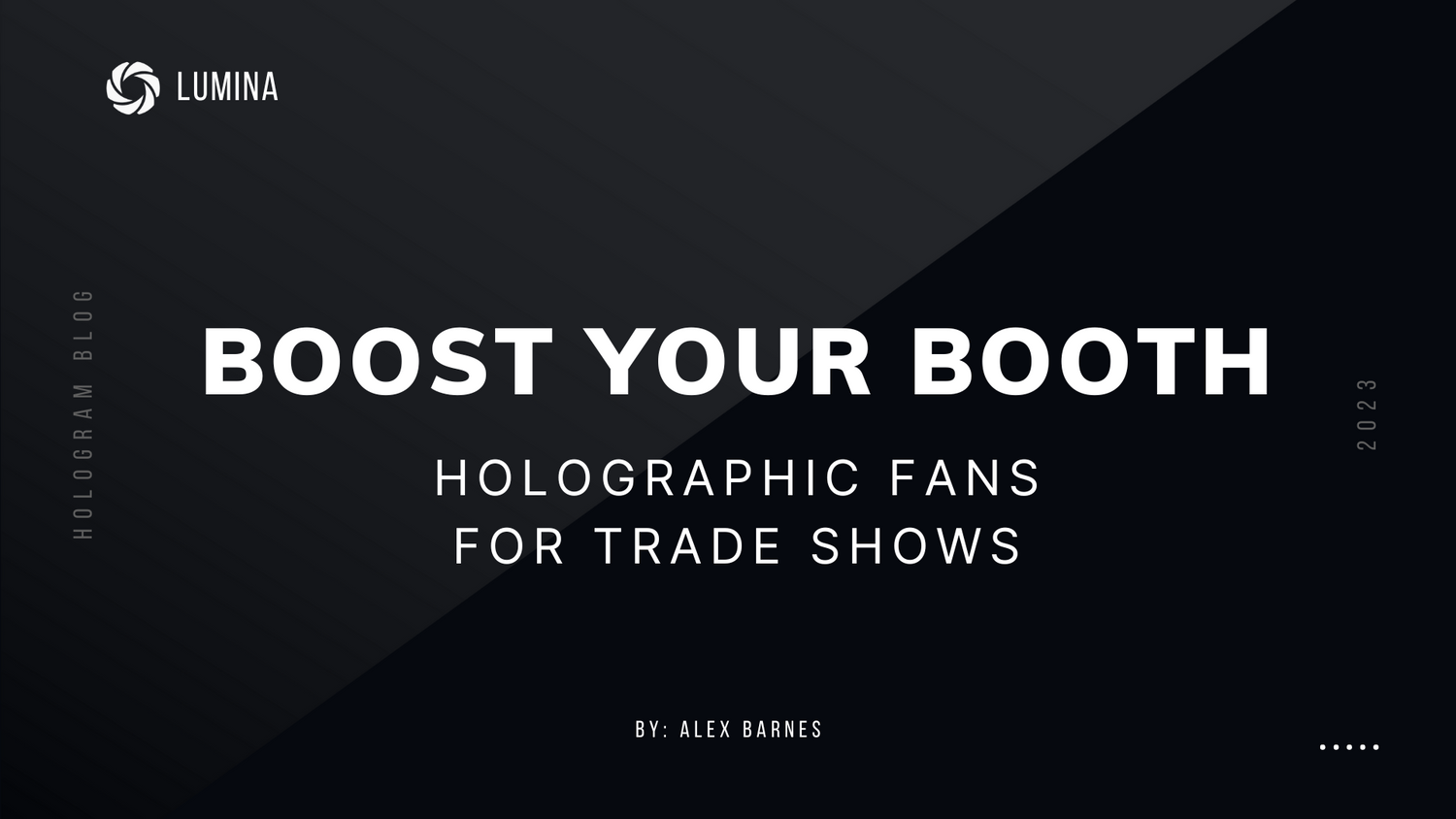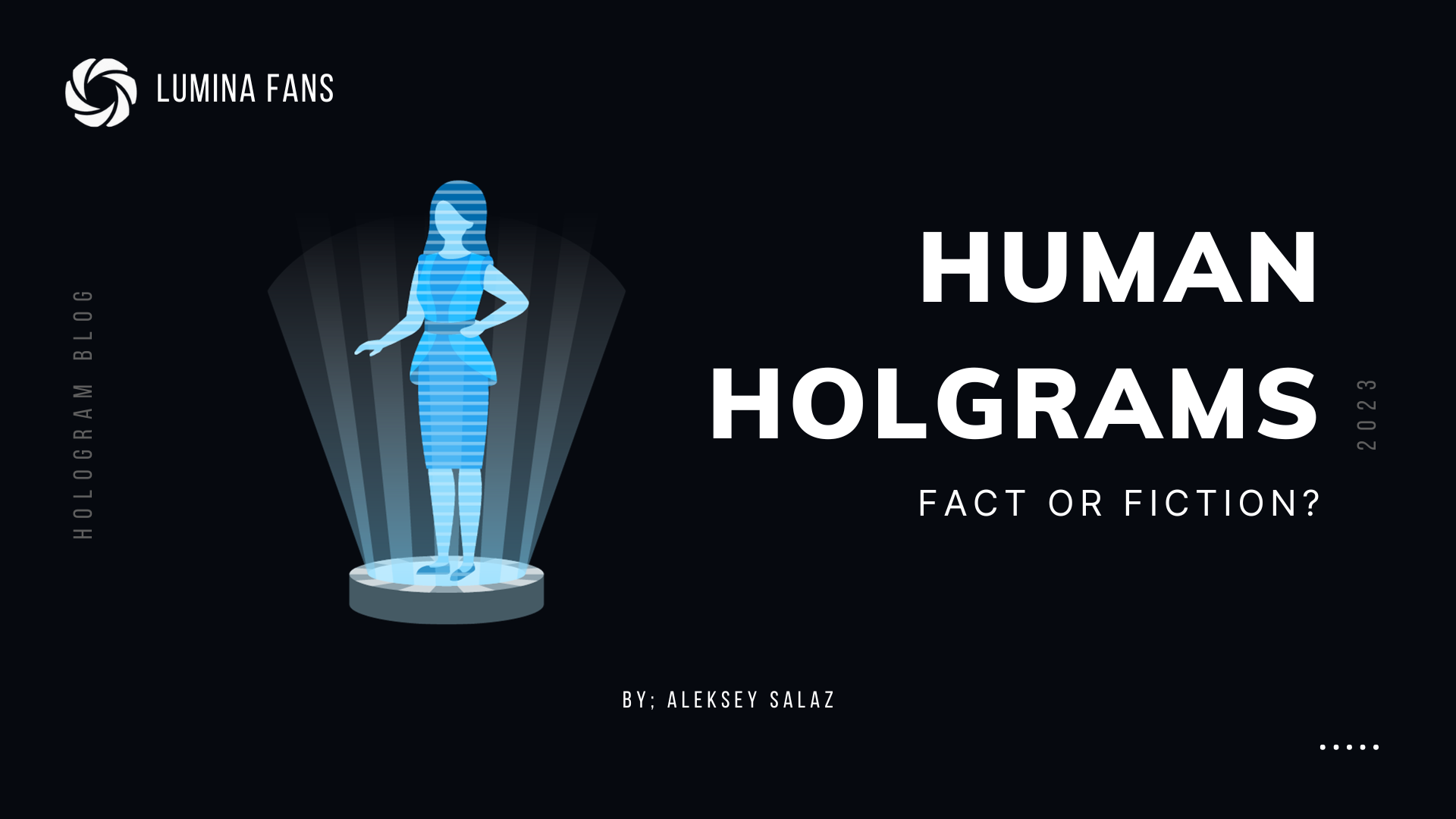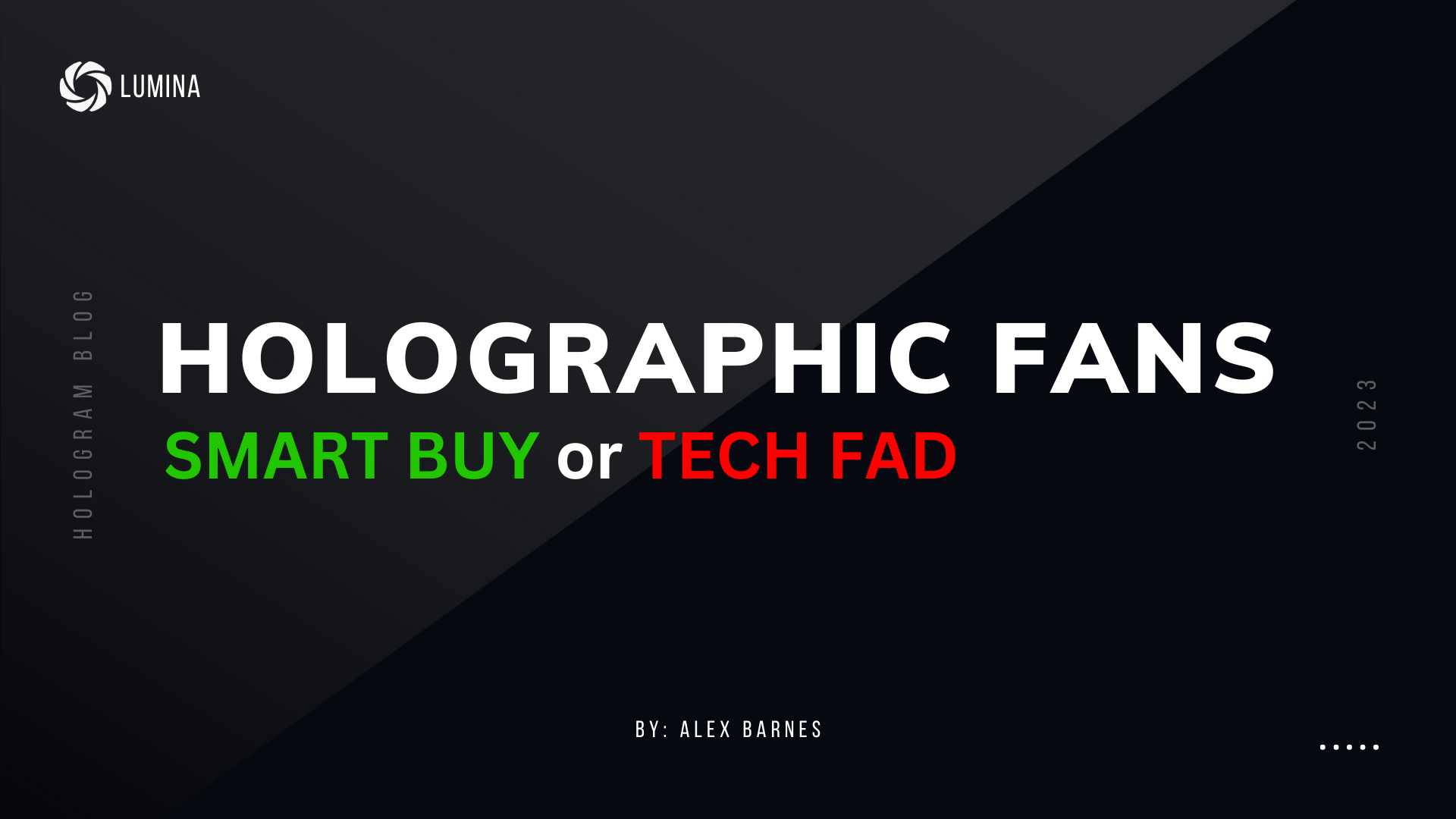Holographic displays offer a captivating way of presenting products or services to potential clients.
The ability to present products or services in a three-dimensional format allows for a more detailed and realistic depiction. Potential clients can explore every aspect of the product, making it easier for them to understand its operation and benefits.
This ability to interact with a virtual product can make a significant difference in a trade show environment, where capturing the attention of attendees is paramount.
Understanding Holographic Technology
What is Holography?
Holography is a complex process that involves the use of light and lasers to create a three-dimensional image.
This image, or hologram, is then projected into the air using a device known as a holographic fan. The result is a floating, 3D representation of an object or scene that can be viewed from all angles.
A holographic display works by projecting a series of images on a rapidly spinning fan of LED lights. This creates the illusion of a three-dimensional object floating in midair.

The image can be viewed without the need for special glasses or other equipment, making it an accessible and engaging way to present information.
The technology behind holographic displays is continually evolving, with new developments leading to clearer, more lifelike images.
As a result, the use of these displays at trade shows and other events is set to increase dramatically in the coming years.
Benefits of Using 3D Holograms for Trade Show Booths
The benefits of using 3D holograms at trade show booths are manifold.
Holograms Are An Experience
First and foremost, they provide a unique and engaging way to display products or services. The interactive nature of holographic displays encourages potential clients to engage with the product, creating a memorable experience that can drive sales.
Be Different
Secondly, 3D holograms can help to differentiate your booth from the competition. In a bustling trade show environment, standing out from the crowd can be a challenge.A holographic display can provide the wow factor that draws attendees to your booth and keeps them there.
Help Your Customer Understand Your Product
Finally, the use of a 3D hologram allows for a more detailed and realistic product demonstration. This can be particularly beneficial for complex products or services that are difficult to explain through traditional 2D presentations.

By allowing potential clients to explore a virtual representation of the product, they are more likely to gain a thorough understanding of its operation and benefits.
The Impact of Holographic Projection on Customer Engagement
In today's digital age, customer engagement is more important than ever. Engaging with customers on a personal level can make the difference between a sale and a missed opportunity. This is where holographic projection comes into its own.
More Eyes, More Sales
Holographic displays offer a unique and engaging way to interact with potential clients. The immersive nature of the technology encourages viewers to engage with the product or service on a deeper level. This can lead to increased interest and, ultimately, higher sales.
Increase Brand Awareness
Furthermore, the use of holographic projection can lead to increased brand awareness. A unique and memorable display is likely to be talked about long after the trade show has ended. This can help to spread the word about your product or service, reaching a wider audience and potentially leading to further sales opportunities.
How to Integrate Holographic Displays into Your Booth
Integrating holographic displays into your trade show booth requires careful planning and consideration.
Step 1: Establish Goals
The first step is to determine what you want to achieve with your display. This could be anything from showcasing a new product to providing a detailed demonstration of a complex service.
Step 2: Find Your Hologram
Once you have a clear goal in mind, you can start to design your holographic display. This involves creating a 3D model of your product or scene, which can then be converted into a holographic image. It's important to ensure that the image is clear and realistic, as this will have a significant impact on the effectiveness of your display.
Step 3: Placement
Finally, you need to consider the placement of your holographic display within your booth. The display should be positioned in a prominent place where it can easily be seen by attendees. However, it's also important to ensure that it doesn't obstruct the flow of traffic through your booth.
Case Studies: Successful Use of Holographic Tech at Trade Shows
Lexus
For instance, Lexus used a holographic display to showcase their latest car model. The display allowed attendees to explore the vehicle in detail, from the engine to the interior design.

The result was a significant increase in interest and sales.
Raising Solutions

Another example comes from the concrete industry. Raising Solutions used a holographic display to broadcast their logo at a trade show. The display allowed attendees to see the logo from a distance, leading to more people stopping by the booth. This led to increased engagement and a boost in sales.
Tips to Maximize the Impact of Your 3D Hologram at Trade Shows
To maximize the impact of your 3D hologram at trade shows, there are several tips you can follow.
Keep it Simple
Firstly, make sure your holographic display is clear and realistic. This can be achieved by using high-quality 3D models and keeping the display clean and free from dust.
Keep it Visible
Secondly, ensure your display is positioned in a prominent place within your booth. It should be easily visible to attendees, but not obstruct the flow of traffic. It can also be beneficial to use lighting and signage to draw attention to your display.
Keep it Fun
Finally, consider using interactive elements within your holographic display. This could involve allowing attendees to manipulate the 3D model or incorporating sound and motion into the display. By creating an engaging and interactive experience, you are more likely to capture the attention of potential clients.
Where to Purchase and How to Set Up Holographic Displays
There are several companies that specialize in the production of holographic displays for trade shows. These companies offer a range of services, from the creation of custom 3D models to the rental or purchase of holographic fans.
Setting up a holographic display is relatively straightforward. The fan-like device is simply plugged into a power source and connected to a computer or other device that contains the 3D model. Once the model is loaded onto the fan, it can be projected into the air to create a floating, 3D image.
However, it's important to bear in mind that the effectiveness of a holographic display relies heavily on the quality of the 3D model. Therefore, it's worth investing in professional design services to ensure your display is as realistic and engaging as possible.
Conclusion
Holographic displays offer a unique and engaging way to showcase products or services at trade shows. They provide a unique experience for potential clients, leading to increased engagement and sales.
While setting up a holographic display requires careful planning and consideration, the potential benefits make it a worthwhile investment.
So why not boost your booth with a holographic fan at your next trade show? The future of trade shows is here, and it's holographic.
Frequently Asked Questions
Do hologram fans work?
Yes, hologram fans work effectively in creating visually captivating 3D displays by rapidly spinning LED lights, making images and videos appear to float in the air.
What are the advantages of hologram fans?
Hologram fans offer a unique way to showcase products or messages in a 3D format, attracting attention and making displays memorable. They are versatile, easy to set up, and can be used in various settings like retail, education, and trade shows.
How do Holofans work?
Holofans work by spinning a fan-like structure with LED lights at high speed. As the LEDs flash on and off at precise intervals, they create the illusion of a 3D image or video floating in space.
What is a holographic fan?
A holographic fan is a device that projects holographic images and videos in mid-air using rapidly rotating LED lights arranged on a fan-like structure.
Is holographic the same as hologram?
Holographic refers to the technology or medium that creates holograms. A hologram is the actual 3D image produced by this technology. While they refer to different things, they are part of the same visual technology realm.
What is the purpose of holographic?
The purpose of holographic technology is to create three-dimensional images or displays, making content more engaging, visually appealing, and easier to understand in some educational or professional scenarios.
How do foil holograms work?
Foil holograms work by recording patterns of light waves onto a metallic surface, creating a 3D image on a 2D surface. When light reflects off the foil hologram, it recreates the recorded image, presenting a 3D visual effect.How to make a hologram?
Making a hologram involves recording light patterns from an object onto a holographic plate or film, using laser light and beam splitters. The recorded light patterns are then reconstructed when illuminated, creating a 3D image. For simpler DIY holograms, there are tutorials available online that demonstrate how to create hologram projections using everyday materials like plastic sheets and smartphone screens.


